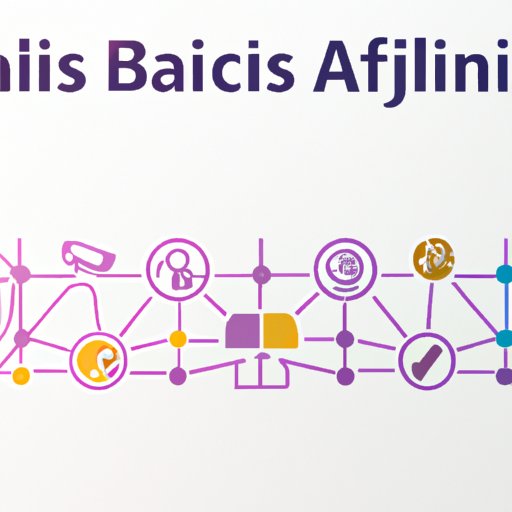Introduction
Artificial intelligence (AI) has become an integral part of our lives, from helping us with everyday tasks to making decisions on a global scale. While AI can be incredibly useful, it is not immune to bias. Bias in AI can have serious implications, from creating unfair outcomes to perpetuating existing social inequalities. In order to ensure that AI systems are fair and equitable, it is essential to understand the sources of bias and develop strategies for reducing it.
At its core, bias is a form of prejudice or discrimination based on certain characteristics like gender, race, or age. AI models can exhibit bias when they are trained on datasets that contain biased information. This can lead to outcomes that are discriminatory or unfair. It is important to recognize that bias can manifest in various ways and is not always easy to detect. As such, it is essential to take proactive steps to reduce bias in AI systems.
Increasing Training Data Diversity
One of the most effective ways to reduce bias in AI models is to collect more diverse training data. By increasing the diversity of the dataset, we can ensure that the AI model is exposed to a variety of perspectives, which can help to reduce any potential bias.
When collecting data, it is important to assess the quality of the data in order to ensure that it is accurate and reliable. Additionally, it is important to ensure that the data is representative of the population it is intended to represent. For example, if the dataset is meant to represent the general population, it should include a balanced representation of different genders, races, and ages.
Introducing Bias-Checking Algorithms
Another way to reduce bias in AI systems is to introduce bias-checking algorithms. These algorithms are designed to identify any potential biases in the data or the model itself. They work by analyzing the data and the model’s output and flagging any instances where there may be a discrepancy. This can help to ensure that the model is producing fair and equitable results.
In order to implement a bias-checking algorithm, it is important to first identify the types of bias that the algorithm will be checking for. This could include things like gender, race, or age bias. Once the types of bias have been identified, the algorithm can then be trained to detect those biases in the data and the model’s output. The algorithm can then be used to flag any potential issues and provide recommendations for how to address them.

Developing Ethical Guidelines for AI Development
In addition to introducing bias-checking algorithms, it is also important to develop ethical guidelines for AI development. This involves identifying potential ethical issues that could arise from the use of AI and creating guidelines for responsible AI development. These guidelines should cover topics like data privacy, transparency, and accountability.
By establishing clear ethical guidelines, organizations can ensure that their AI systems are being used responsibly and that they are taking steps to mitigate any potential harms. This is especially important given the potential for AI to create unintended consequences or to perpetuate existing social inequalities.

Developing Tools to Monitor and Detect Bias in AI Models
Another way to reduce bias in AI systems is to develop tools to monitor and detect bias. There are several types of tools available, including automated tools that can detect bias in datasets, as well as manual tools that can be used to manually review models for potential bias. Using these tools can help to identify any potential issues before they become a problem.
Additionally, using monitoring and detection tools can help to ensure that AI models are performing as expected and that any potential biases are addressed in a timely manner. This can help to ensure that AI systems are producing fair and equitable outcomes.

Incorporating Feedback Loops into AI Systems
Feedback loops are another way to reduce bias in AI systems. A feedback loop is a system in which the output of the AI model is monitored and used to refine the model. This allows the model to adjust its parameters over time in order to improve its accuracy and reduce any potential bias.
In order to incorporate feedback loops into AI systems, it is important to define the metrics that will be used to measure the model’s performance. This could include things like accuracy, precision, recall, and fairness. Once the metrics have been defined, the feedback loop can then be used to adjust the model’s parameters in order to improve its performance.
Promoting Diversity Among AI Researchers and Developers
Finally, it is important to promote diversity among AI researchers and developers. Having a diverse team of people working on AI projects can help to ensure that there is a variety of perspectives represented in the development process. This can help to reduce any potential bias that may be present in the model.
There are several strategies for promoting diversity among AI researchers and developers. This includes initiatives like mentorship programs, networking events, and diversity outreach. Additionally, organizations should strive to create an inclusive environment where everyone is respected and valued.
Conclusion
Bias in AI can have serious implications, from creating unfair outcomes to perpetuating existing social inequalities. In order to ensure that AI systems are fair and equitable, it is essential to understand the sources of bias and develop strategies for reducing it. This can include things like collecting more diverse training data, introducing bias-checking algorithms, developing ethical guidelines, incorporating feedback loops, and promoting diversity among AI researchers and developers.
(Note: Is this article not meeting your expectations? Do you have knowledge or insights to share? Unlock new opportunities and expand your reach by joining our authors team. Click Registration to join us and share your expertise with our readers.)
